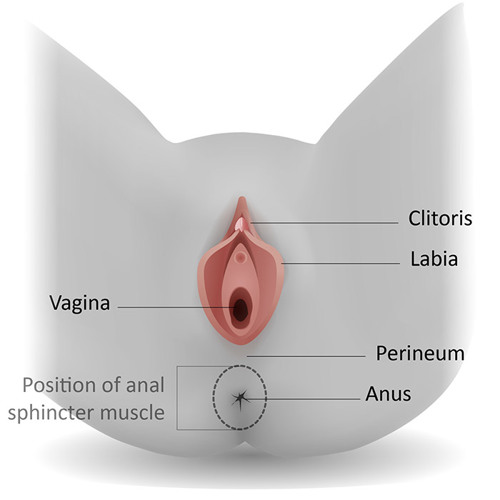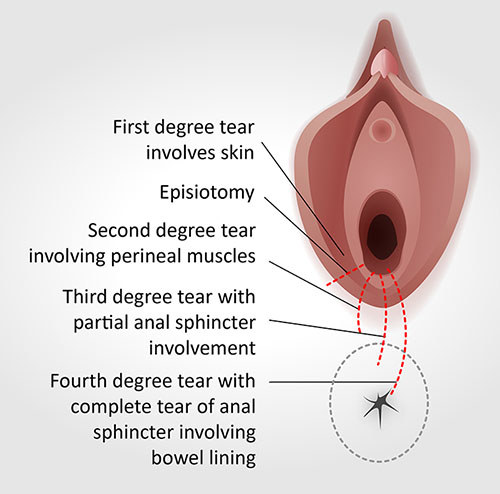Different types of tears that can occur during childbirth.
Your perineum is the area between your vaginal opening and back passage (anus).
It is common for the perineum to tear to some extent during childbirth.
Tears can also occur inside the vagina or other parts of the vulva, including the labia.
Up to 9 in every 10 first time mothers who have a vaginal birth will experience some sort of tear, graze or episiotomy. It is slightly less common for mothers who have had a vaginal birth before.
For most women, these tears are minor and heal quickly.

First-degree
Small tears affecting only the skin which usually heal quickly and without treatment.
Second-degree
Tears affecting the muscle of the perineum and the skin. These usually require stitches.
Third- and fourth-degree tears
For some women (3.5 out of 100) the tear may be deeper. Third- or fourth- degree tears, also known as obstetric anal sphincter injuries (OASI), extend into the muscle that controls the anus (anal sphincter). These deeper tears need repair in an operating theatre.
Read more about third and fourth degree tears

Tears happen spontaneously as the baby stretches the vagina and the perineum during birth.
An episiotomy is a cut made by your healthcare professional into the perineum and vaginal wall to make more space for your baby to be born.
Episiotomies are done with your consent.
They are only done if your baby needs to be born quickly, often if you are having an instrumental (forceps or vacuum assisted) birth, or if you are at risk of a serious perineal tear.
After the birth of your baby, your healthcare professional will carefully examine your vagina, perineum and rectum to see if you have a tear, and if so, what type. They will then advise you if you need stitches.
If you have sustained a third- or fourth- degree tear, you will be transferred to the operating theatre where your muscles will be repaired. You will be given an epidural or spinal anaesthesia, so that you have good pain relief.
